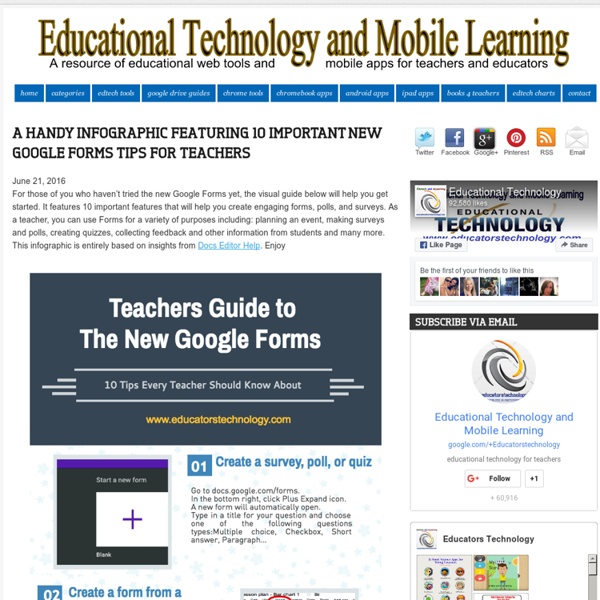A Handy Infographic Featuring 10 Important New Google Forms Tips for Teachers

Education and the brain: what happens when children learn?
Researchers looking at child development often use search-and-find tasks to look at the ways in which children apply what they are learning about the physical world. Tests carried out on toddlers reveal that something quite remarkable happens in child development between the ages of two and five – a stage identified by both educationalists and neuroscientists as critical to the capacity for learning. Dr Sara Baker is a researcher into early childhood at the Faculty of Education. She is interested in the role of the brain’s prefrontal lobe in how young children learn to adapt their understanding to an ever-shifting environment. Research by Baker and colleagues is contributing to an understanding of the acquisition of skills essential to learning. In an experiment designed to identify the age at which executive skills develop, Baker and colleagues used a row of four interconnected boxes to test children’s ability to apply their knowledge of basic physics.
Related:
Related:



